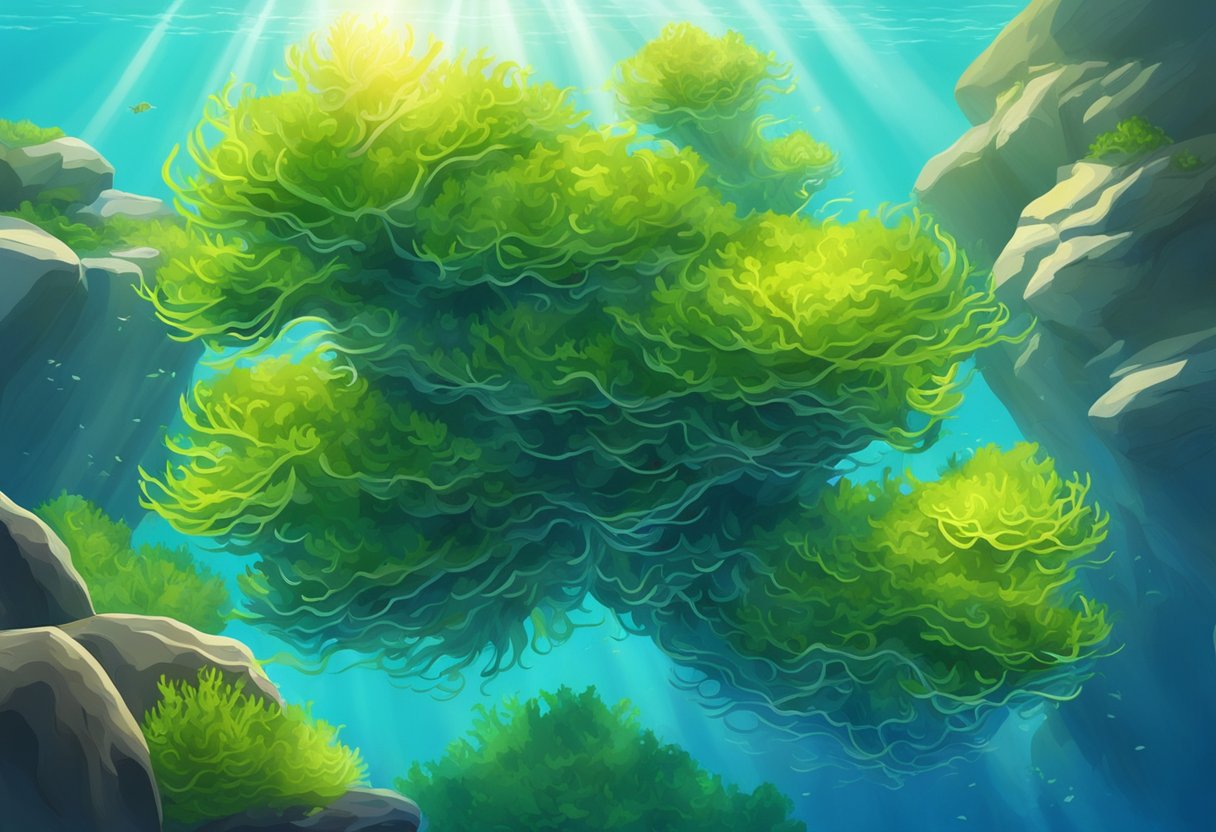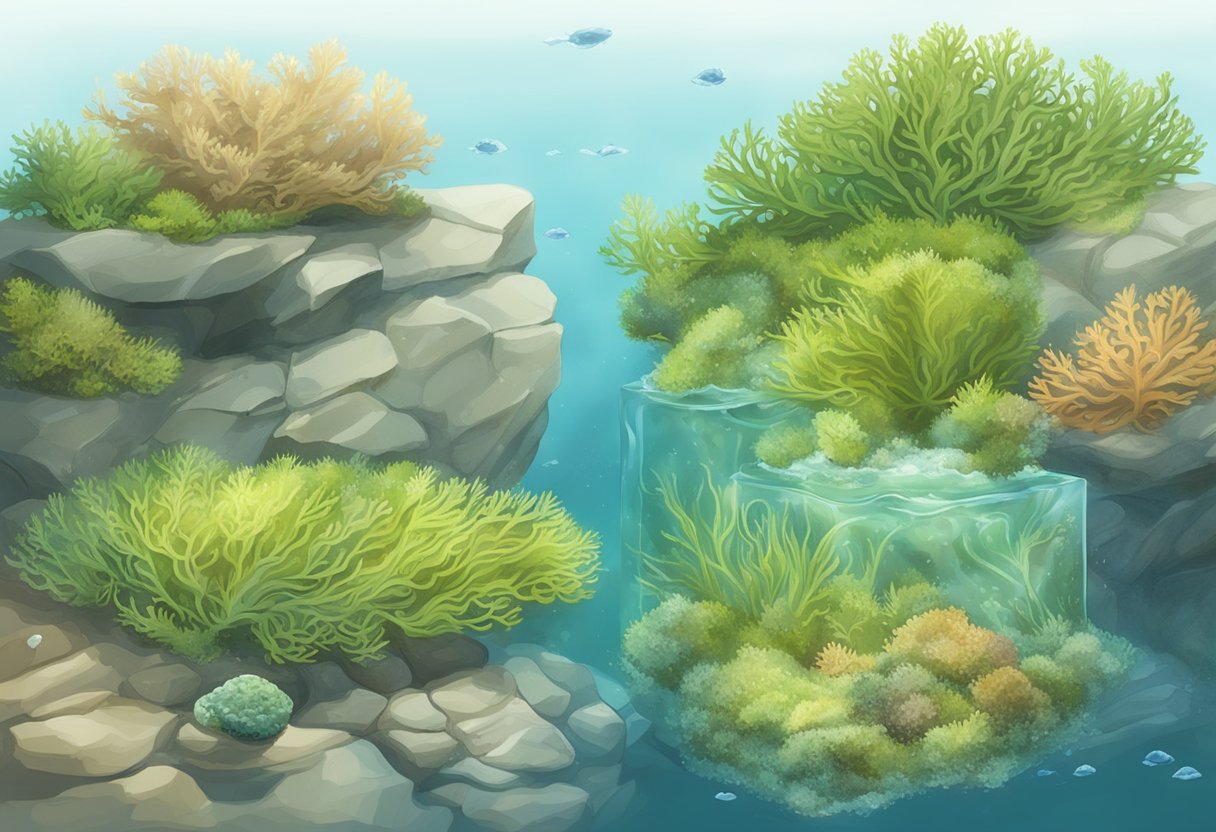Growing sea moss at home has gained popularity in recent years, given the numerous health benefits it offers. Sea moss, also known as Irish moss, is a type of seaweed commonly found along the coastlines of the Atlantic Ocean. Rich in essential nutrients, sea moss is widely used in food, skincare products, and supplements, making it a valuable addition to your home garden. This article aims to guide you on the process of growing sea moss at home, covering its cultivation requirements, propagation and maintenance, and harvesting techniques.
To successfully grow sea moss at home, it is crucial to understand and recreate the optimal conditions it needs to thrive. As a marine plant, sea moss requires a specific set of environmental factors, including salinity, temperature, and light exposure. Ensuring that these factors are properly managed will help promote healthy growth and development, as well as prevent potential diseases and pests that may affect your sea moss.
In addition to providing the right conditions for growth, proper propagation and maintenance techniques make a significant difference in the success of cultivating sea moss at home. As you delve further into this process, you will come across practical advice on harvesting sea moss, as well as answers to frequently asked questions to help clarify any concerns.
Key Takeaways
- Sea moss is packed with essential nutrients and offers many health benefits.
- Cultivating sea moss requires creating the right environmental conditions.
- Proper propagation and maintenance techniques are crucial for successful growing.
Cultivation Requirements

To grow sea moss at home or indoors, there are certain cultivation requirements to consider.
Optimal Growing Conditions
Sea moss thrives in specific environmental conditions. To successfully grow sea moss, it is essential to mimic these conditions in a home or indoor setting. Here are the key factors to consider:
- Water: Sea moss needs clean, nutrient-rich ocean water or saltwater to grow. Make sure to maintain proper salinity and water temperature, ideally between 68-75°F (20-24°C).
- Light: Moderate sunlight exposure is crucial for thriving growth. Place your sea moss in a spot that receives indirect sunlight, as excessive exposure can damage the plant.
- Surface: Sea moss prefers attaching to surfaces like rocks, coral, or PVC structures. Providing an ample surface area for the sea moss to attach is essential for growth.
Supplies and Tools Needed
To start growing sea moss at home, gather the necessary supplies and tools. Here's a quick checklist:
- Sea moss spores or fragments.
- Clean saltwater or an ocean water substitute.
- A transparent container, such as a fish tank or a glass jar.
- A cover to maintain water temperature and reduce evaporation.
- Rocks, coral, or PVC structures for surface attachment.
- A thermometer to monitor water temperature.
As you embark on the journey of growing sea moss at home or indoors, understanding the differences between naturally sourced and farmed sea moss is essential. Wildcrafted Sea Moss vs. Ocean Farmed Sea Moss vs. Pool Grown Sea Moss is an informative resource on this topic. Stay informed and enjoy the exciting experience of cultivating sea moss in the comfort of your home.
Propagation and Maintenance

Starting Your Sea Moss
To grow sea moss indoors, start by preparing the necessary materials. You'll need:
- A clean glass container or aquarium
- Sea moss fragments or propagules
- Marine salt mix
- Dechlorinated or distilled water
- Heater and thermometer
- Aeration equipment
- Light source, such as an LED grow light
Fill the container with dechlorinated or distilled water and add marine salt mix according to the package instructions to achieve the correct salinity level (32 to 35 parts per thousand). Adjust the heater to maintain a water temperature of 68 to 74 degrees Fahrenheit (20-23 degrees Celsius).
Next, attach the aeration equipment and light source. Sea moss requires moderate water movement, so make sure the aerator provides gentle water flow. Set the light source on a timer to mimic a natural light cycle with 12 hours of exposure to light and 12 hours of darkness.
Place the sea moss fragments into the container, allowing ample space between each fragment for growth. Ensure each fragment is attached to a surface or held in place with mesh to prevent floating.
Daily and Weekly Care
- Daily: Monitor the temperature and salinity levels in the container. Adjust the heater and add marine salt mix as needed to maintain stable conditions.
- Weekly: Conduct a 25% water change using dechlorinated or distilled water mixed with marine salt. This helps to maintain good water quality and prevents the buildup of impurities.
Troubleshooting Common Issues
- Slow growth or discoloration: Sea moss requires sufficient nutrients and minerals for optimal growth. While these are naturally present in marine salt mix to some extent, you may need to supplement with a seaweed-specific fertilizer. Follow the manufacturer's instructions for proper dosage and application.
- Excessive algae growth: This can be a sign of excessive nutrients in the water or too much light exposure. Decrease the strength of any added fertilizers, and consider shortening the duration of light exposure.
- Wilting or dying sea moss: Ensure that water movement is adequate but not too strong, as the ideal sea moss environment requires moderate, gentle flow. Additionally, overexposure to direct, intense light can cause sea moss to weaken. Reposition the light source to soften its direct impact.
- Debris buildup on sea moss: Regularly remove any visible debris from the container's surface and sea moss fragments. This helps in maintaining good water quality standards, which are essential for healthy sea moss growth.
Harvesting Sea Moss

When to Harvest
The ideal time to harvest sea moss depends on the growth phase of the plant. Typically, it takes around 3 to 4 months for sea moss to reach full maturity. It's essential to harvest sea moss when it has reached its peak growth to ensure the highest nutritional content possible.
For those interested in growing sea moss at home, it's vital to find a suitable location with the right conditions, such as access to sufficient sunlight and a growing medium like seawater or ocean water. It's also helpful to learn from experienced growers, such as those in the Caribbean island of Saint Lucia, who specialize in producing high-quality sea moss.
Post-Harvest Treatment
After harvesting sea moss, it's crucial to follow proper post-harvest treatment procedures to ensure its longevity and effectiveness. Here are some essential steps:
- Cleaning: Gently rinse the sea moss with fresh, clean water to remove any debris, sand, and salt. Be cautious not to damage its delicate structure.
- Soaking: Soak the sea moss in clean water for at least 12 to 24 hours to rehydrate it. This process also helps to dissolve any remaining impurities.
- Draining: Once hydrated, drain the water, and gently squeeze out any excess liquid from the sea moss.
- Drying: Spread the cleaned sea moss on a clean and flat surface. Allow it to dry under natural sunlight for 3 to 5 days, depending on the intensity and humidity of your environment. Drying under the sun is essential, as it helps to retain the sea moss's vibrant colors and nutritional value.
By following these post-harvest treatment steps, sea moss can be successfully prepared for consumption or storage. It's important to store the dried sea moss in an airtight container under cool and dark conditions to maintain its freshness and potent properties.
Frequently Asked Questions

What conditions are required to cultivate edible sea moss successfully?
To cultivate edible sea moss successfully, it requires a combination of clean seawater, adequate sunlight, and good water flow. The ideal temperature range for sea moss growth is between 15 to 25 degrees Celsius. They grow best in rocky, intertidal zones as they need to anchor themselves to surfaces. Additionally, a balanced level of nutrients, such as nitrogen and phosphorus, contributes to healthy sea moss growth.
Which regions are ideal for the natural growth of sea moss?
Sea moss naturally thrives in the Caribbean, particularly in regions like Jamaica, St. Lucia, and Grenada. It can also be found in the colder waters of the North Atlantic, along the coastlines of Europe and North America. These regions usually have the right mix of light, water quality, and temperature for sea moss to grow well.
Can sea moss be grown at home, and if so, what is the process?
Yes, sea moss can be grown at home using a controlled environment and appropriate conditions. To grow sea moss at home, begin by obtaining live sea moss fragments and creating a seawater mix with sea salt and purified water. Make sure to maintain a salinity of about 30-35 ppt and a temperature range of 15-25 degrees Celsius for optimal growth. Provide ample light and gentle water movement to mimic their natural environment. In about 6-8 weeks, the sea moss should be ready to harvest.
Is it possible to propagate sea moss from seeds, and where can one procure them?
Sea moss does not produce seeds but can be propagated through vegetative fragmentation. Fragmentation involves breaking off small pieces of a healthy sea moss plant, each containing at least one node. These fragments can then be attached to a solid surface, such as rocks or mesh, and grown in a suitable environment. Live sea moss fragments can be obtained from local seafood markets or from online suppliers specializing in seaweed cultivation.





